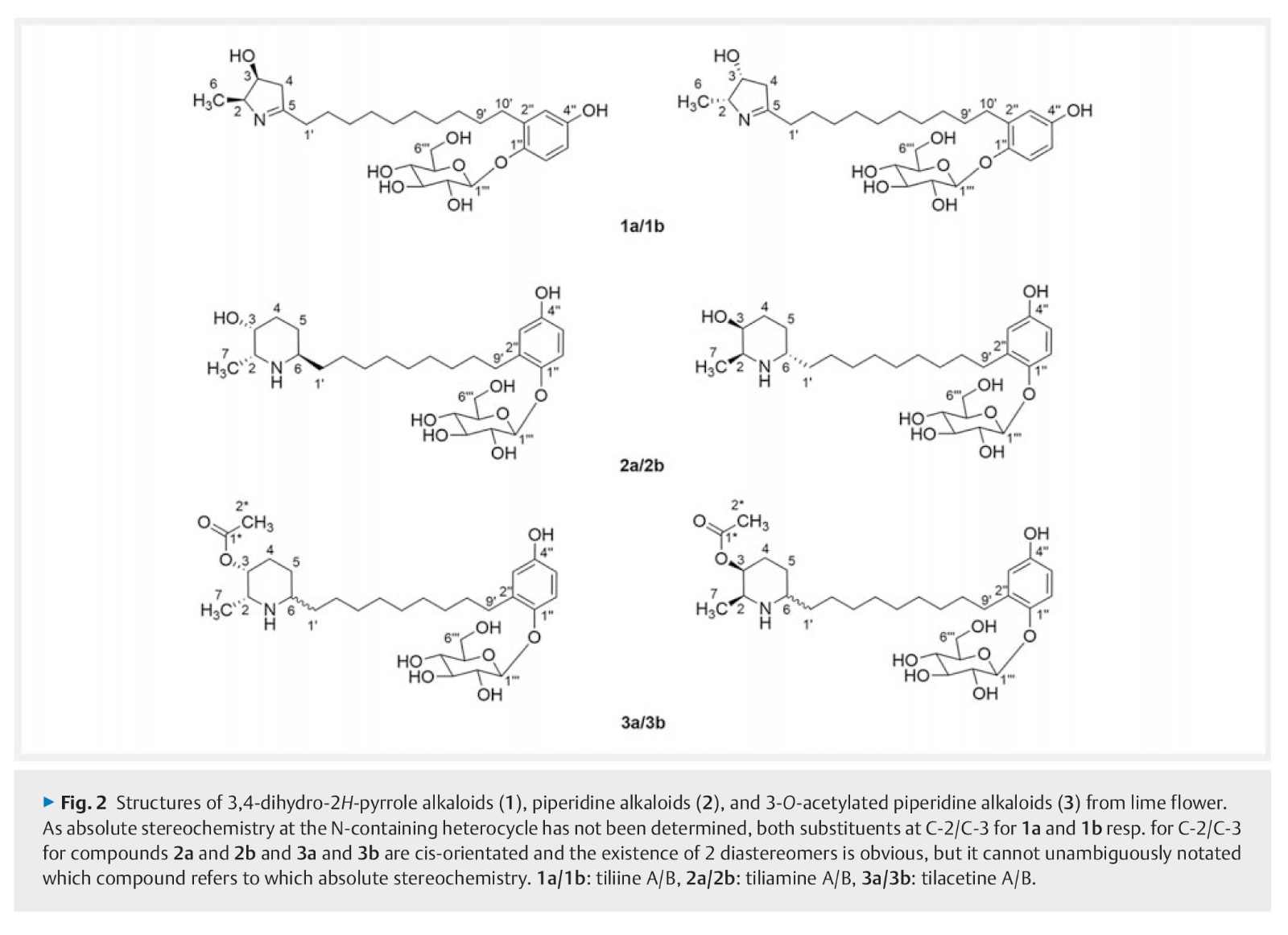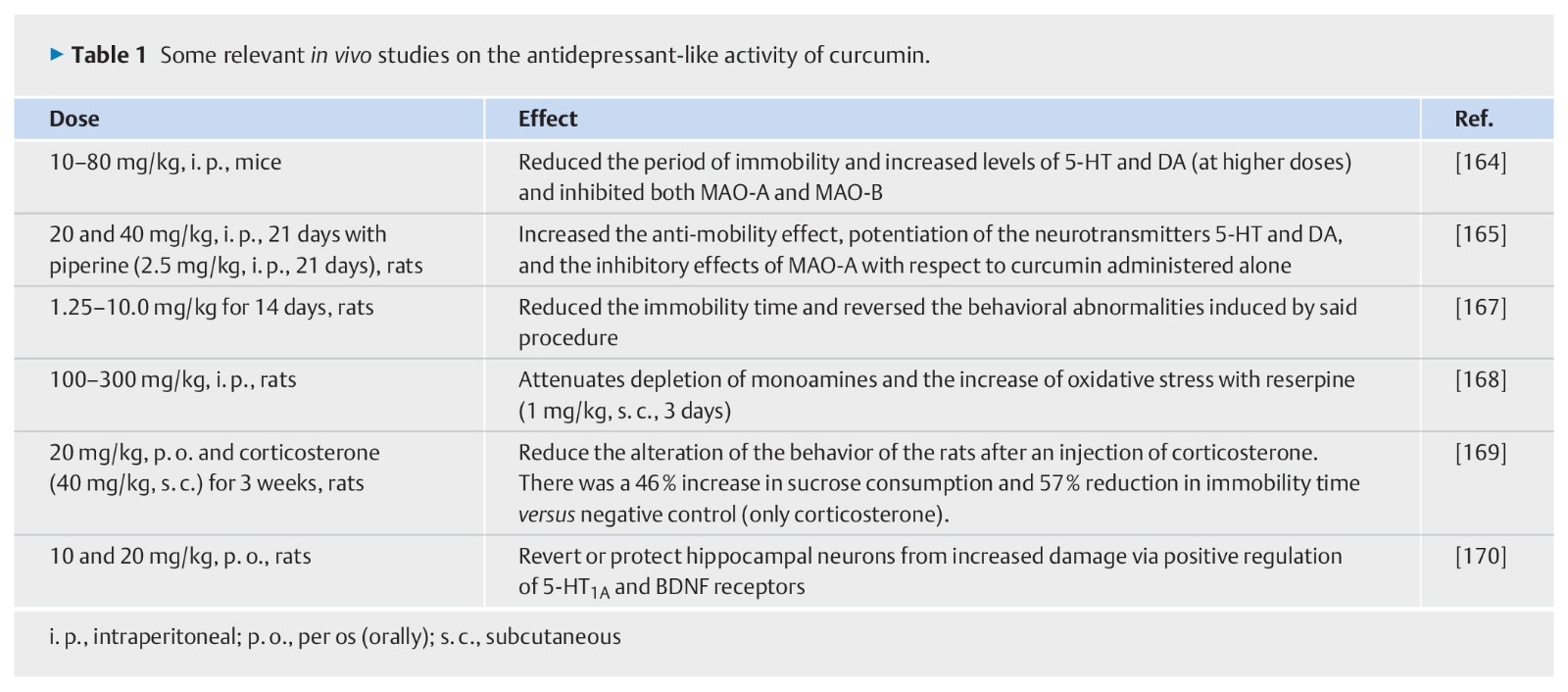
Planta Medica
Impact Factor 2019: 2.687
作为编辑,我惊奇地发现,老药用的欧椴树含有能有药理活性的生物碱。鉴定这些微量浓度的哌啶和吡咯衍生物是一项突破性的工作。出色的结构解析为它们的存在提供了明确的证据,并扩展了椴树属的化学多样性。
迄今为止,还没有综述全面了解所谓的抗抑郁药用植物如卡瓦卡瓦或圣约翰草的生物分子作用机制。因此,更仔细地研究过去压倒性数量的报告非常重要。作者做出了这一努力,并深入挖掘文献,提供了不仅仅是描述性综述。这是对越来越多的人患有抑郁症的世界更好地理解具有抗抑郁特性的药用植物的重要贡献。
欢迎阅读Planta Medica以上两篇免费论文,阅读本刊更多论文,请点击这里。

Symma N et al.
Lime flowers, traditionally used for medical purposes for the treatment of symptoms of the common cold and mental stress, consist of the dried inflorescences including the floral bracts of Tilia cordata, Tilia platyphyllos, Tilia × vulgaris, or mixtures thereof. During phytochemical investigations, 6 different alkaloids – not described until now – were detected in T. cordata and T. platyphyllos flowers. They have been isolated and characterized as alkaloids with a dihydro-pyrrole and a piperidine substructure, respectively. Compounds 1a and 1b (tiliines A and B) are characterized as 2 diastereomers containing a 2-methyl-3,4-dihydro-2H-pyrrol-3-ol, connected via a C-10 alkyl chain to a O-glucosylated hydroquinone moiety. Compounds 2a and 2b (tiliamines A and B) are diastereomers of a 2-methyl-substituted piperidin-3-ol, coupled via a C-9 alkyl chain again to an O-glucosylated hydroquinone moiety. Compounds 3a and 3b (tilacetines A and B) are 3-O-acetylated derivatives of tiliamines. Quantification of the 6 alkaloids by HPLC-ESI-qTOF analysis indicated the presence of all alkaloids in T. cordata flowers and T. platyphyllos flowers, bracts, and leaves, with tiliines A and B and tilacetines A and B being the major compounds. Acetone/water turned out be the best extraction solvent for the alkaloids, but ethanol and ethanol/water mixtures also can be used for effective extraction. Furthermore, the alkaloids are found in hot water extracts, which are typically used in the traditional medicine.

○
Medicinal Plants in the Treatment of Depression: Evidence from Preclinical Studies
Moragrega I, Ríos JL.
Medicinal plants and their extracts are natural remedies with enormous potential for treating various diseases, including depression and anxiety. In the case of depression, hundreds of plants have traditionally been used in folk medicine for generations. Different plant extracts and natural products have been analyzed as potential antidepressant agents with validated models to test for antidepressant-like effects in animals, although other complementary studies have also been employed. Most of these studies focus on the possible mediators implicated in these potential effects, with dopamine, serotonin, and noradrenaline being the principal neurotransmitters implicated, both through interference with receptors and with their metabolism by monoamino oxidases, as well as through neuro-endocrine and neuroprotective effects. There are approximately 650 reports of antidepressant-like medicinal plants in PubMed; 155 of them have been compiled in this review, with a relevant group yielding positive results. Saffron and turmeric are the most relevant species studied in both preclinical and clinical studies; St. Johnʼs wort or kava have also been tested extensively. To the best of our knowledge, no review to date has provided a comprehensive understanding of the biomolecular mechanisms of action of these herbs or of whether their potential effects could have real benefits. The purpose of this narrative review is to provide an update regarding medicinal plants from the year 2000 to the present to examine the therapeutic potential of these antidepressant-like plants in order to contribute to the development of new therapeutic methods to alleviate the tremendous burden that depression causes worldwide.

